Electric vehicles (EVs) are rapidly gaining traction, and the automotive landscape is shifting towards electrification. In 2021, electric cars made a significant impact, with several EVs being recognized among the best vehicles of the year. As we move into the future, EVs are poised to become even more prominent, offering a compelling alternative to traditional gasoline-powered cars. While high-end electric pickup trucks capture attention, the true mass-market appeal lies in practical and affordable EVs like the 2021 Volkswagen ID.4.
The 2021 Volkswagen ID.4 enters the scene as Volkswagen’s first mass-market electric vehicle in the United States, aiming to seamlessly transition drivers into the EV world. It promises the familiar practicality of a family crossover with the modern appeal of an electric powertrain. With four doors, five seats, a spacious interior, and a usable trunk, the ID.4 is designed to cater to everyday needs. Crucially, it aims for a price point accessible to a wider audience, beyond just tech enthusiasts. The core idea behind the 2021 Volkswagen ID.4 is to offer an electric car experience without sacrificing the usability and comfort that drivers expect from Volkswagen’s popular models like the Golf or Tiguan. While Volkswagen previously offered the e-Golf in the U.S., the ID.4 represents a more dedicated and significant step into the EV market. The 2021 Volkswagen ID.4 achieves this goal in some aspects, yet falls short in others, particularly in its technological execution.
2021 Volkswagen ID.4 Specs
| 2022 base price (2021 AWD Pro S as tested): | $41,995 ($50,870) |
|---|---|
| Powertrain: | 82-kWh lithium-ion battery |
| Horsepower: | 295 |
| Torque: | 339 lb-ft |
| Seating capacity: | 5 |
| Cargo volume: | 30.3 cubic feet (64.2 cubic feet with the rear seats down) |
| Curb weight: | 4,888 pounds |
| Range: | Between 240 and 249 miles, depending on trim |
| EPA fuel economy: | 98 MPGe city |
| Quick take: | A solid daily driver that’s severely undermined by its atrocious technology and unpredictable glitches. |
| Score: | 5.5/10 |
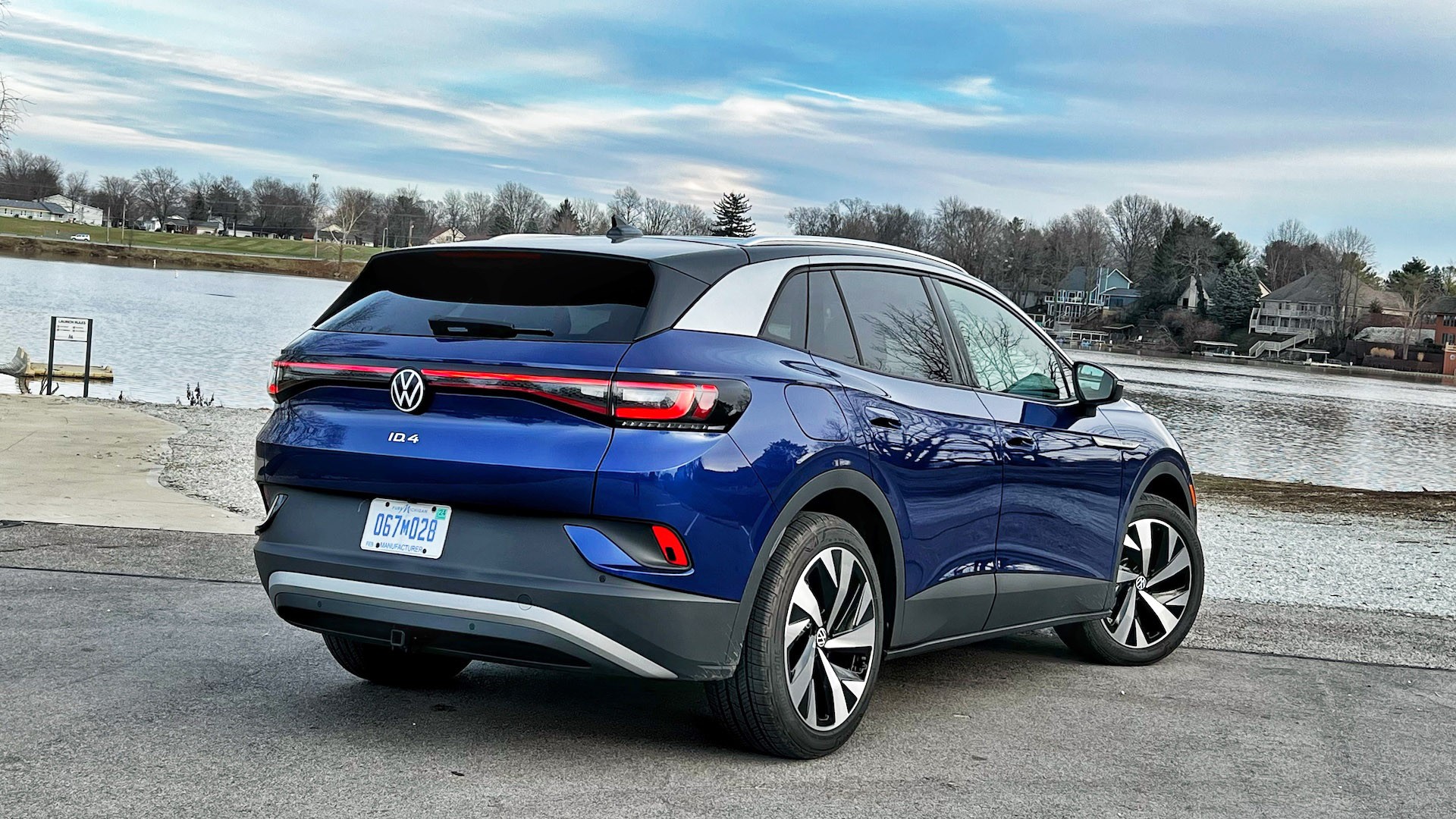
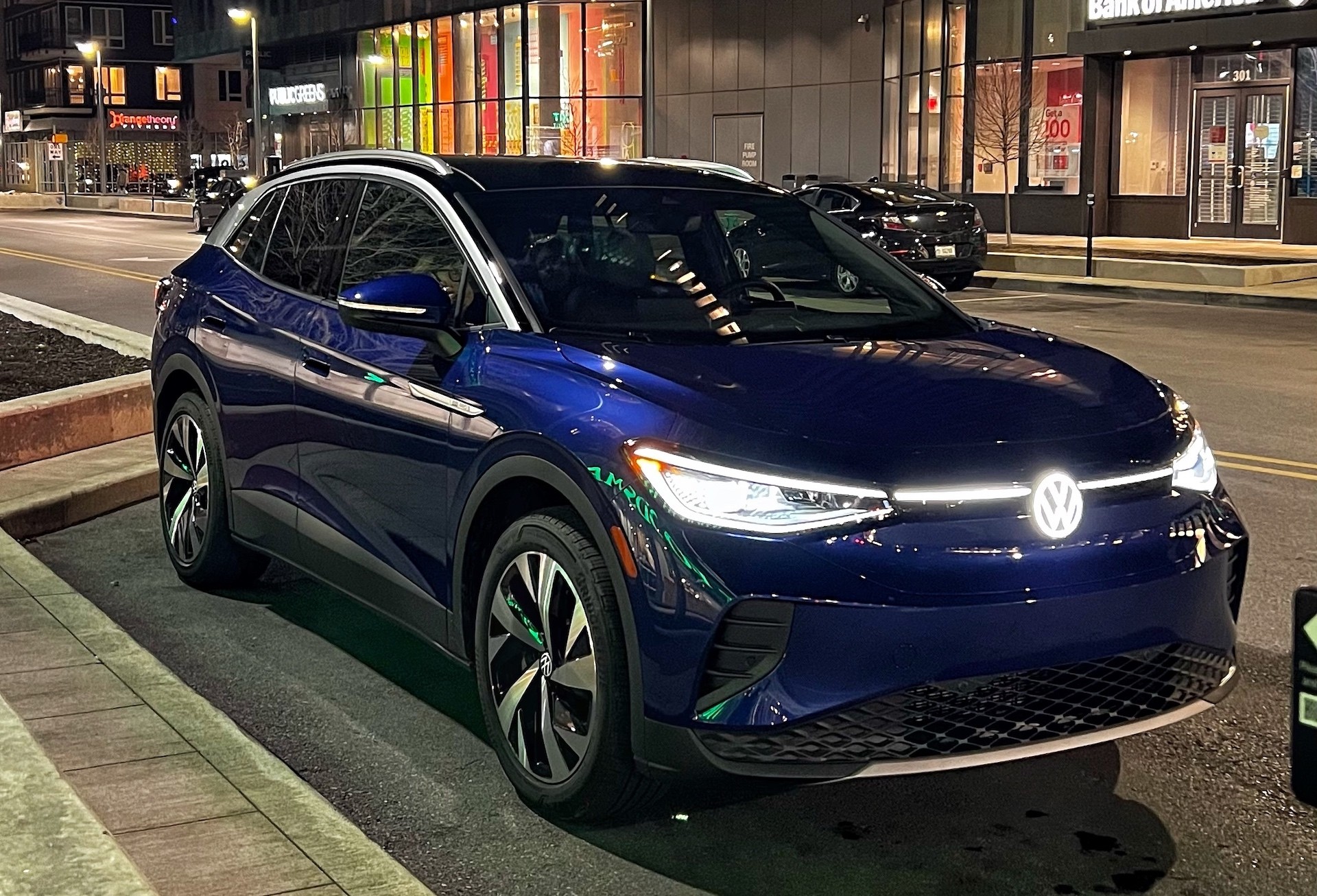
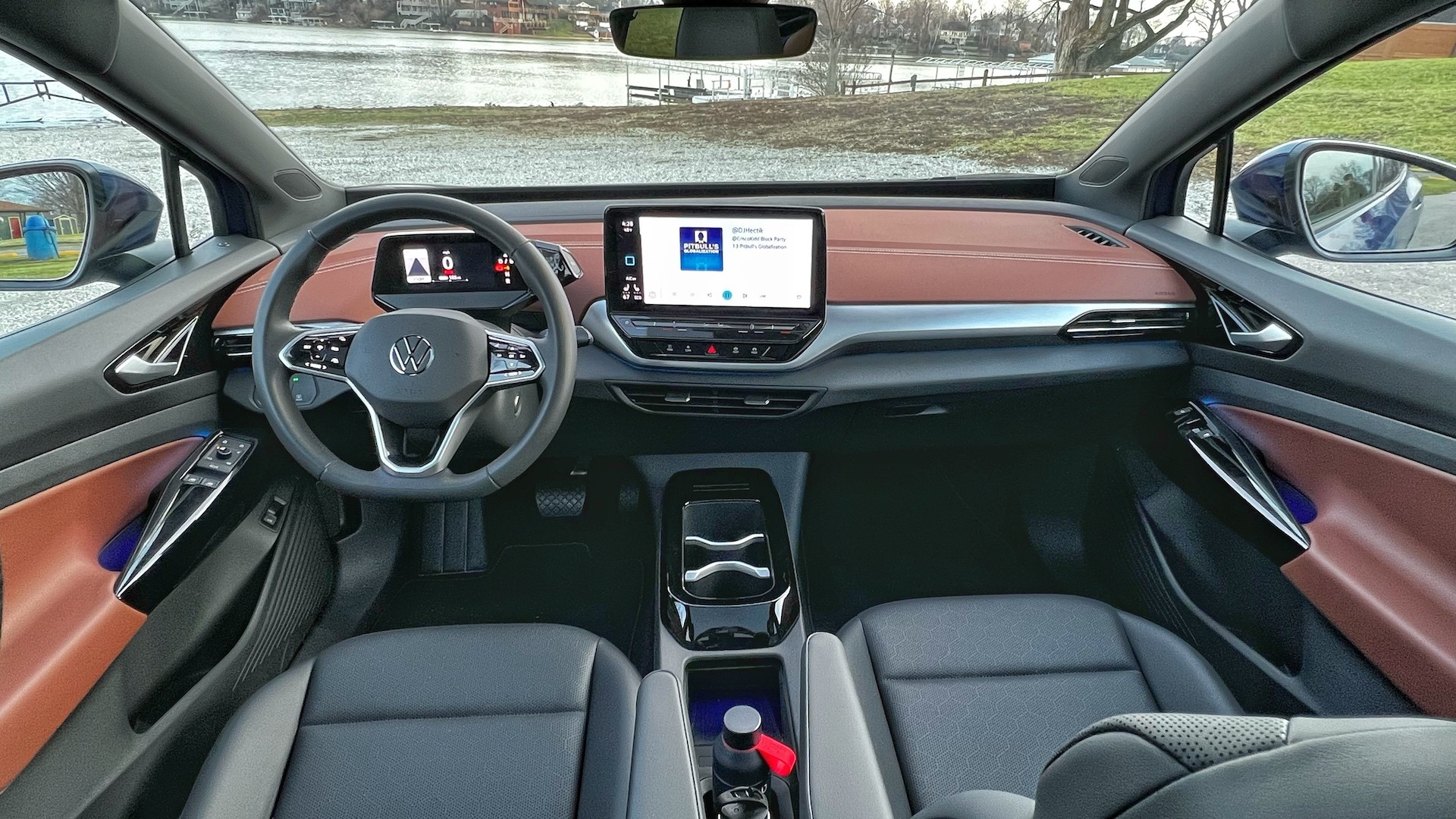
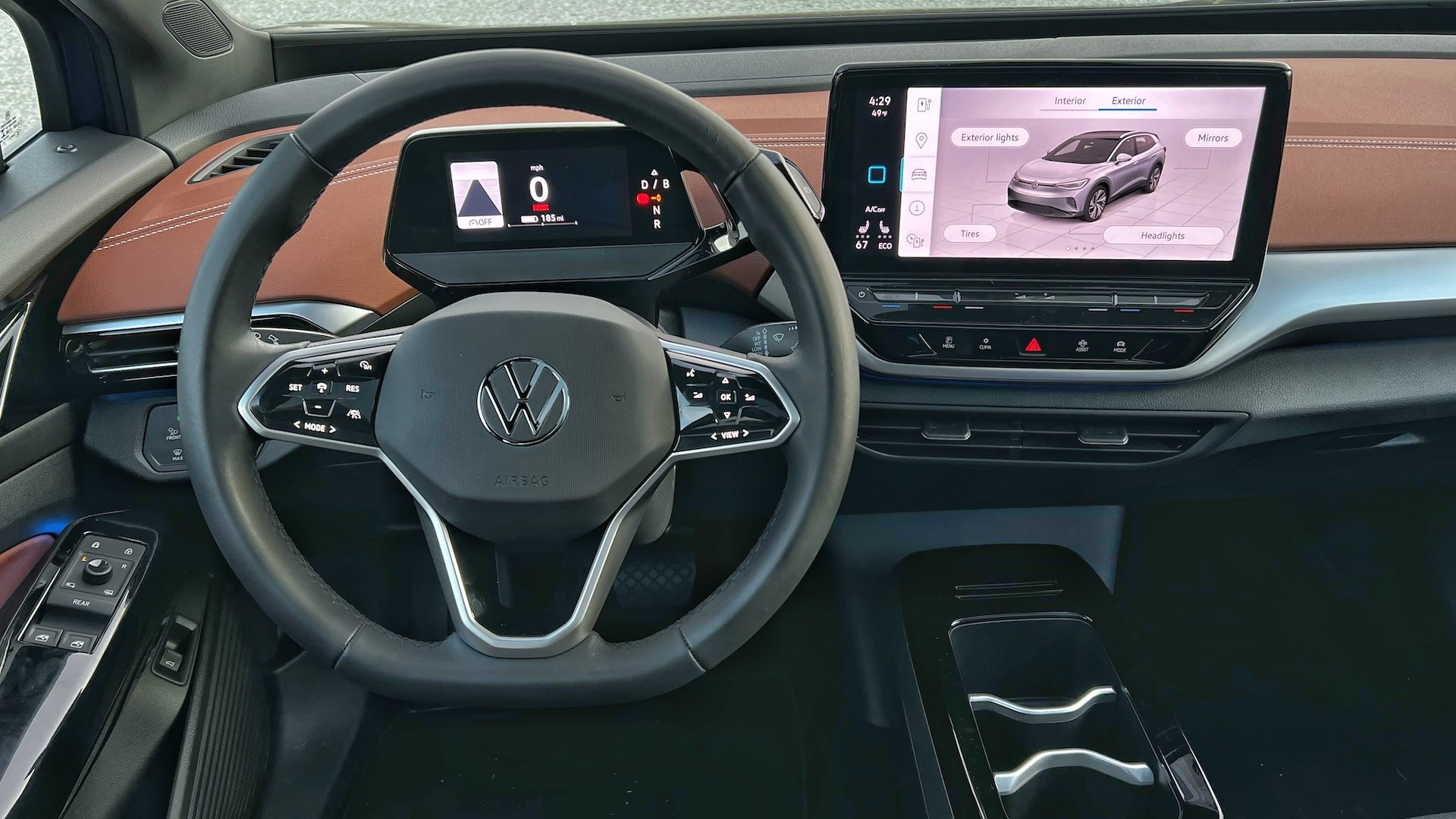
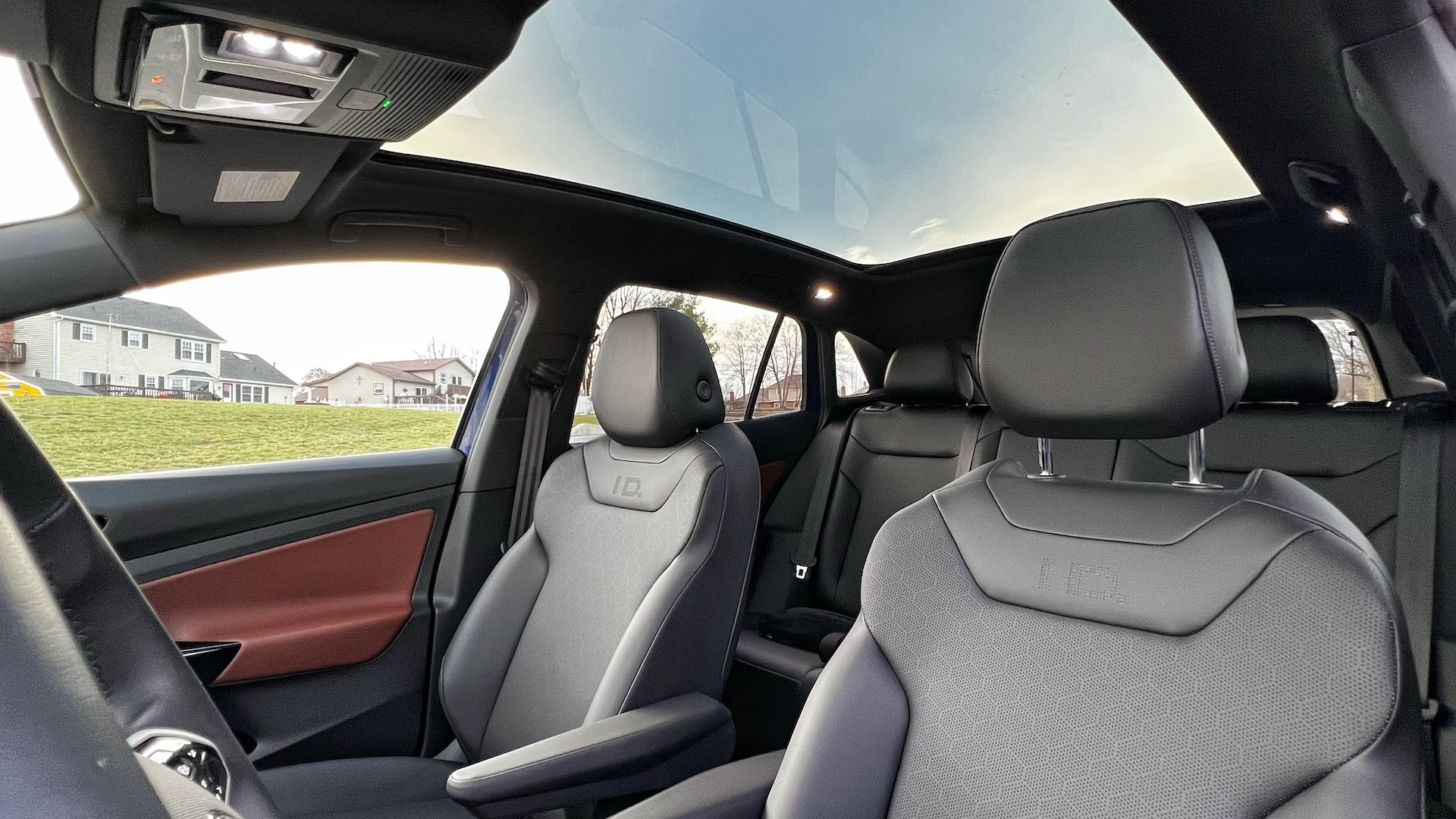
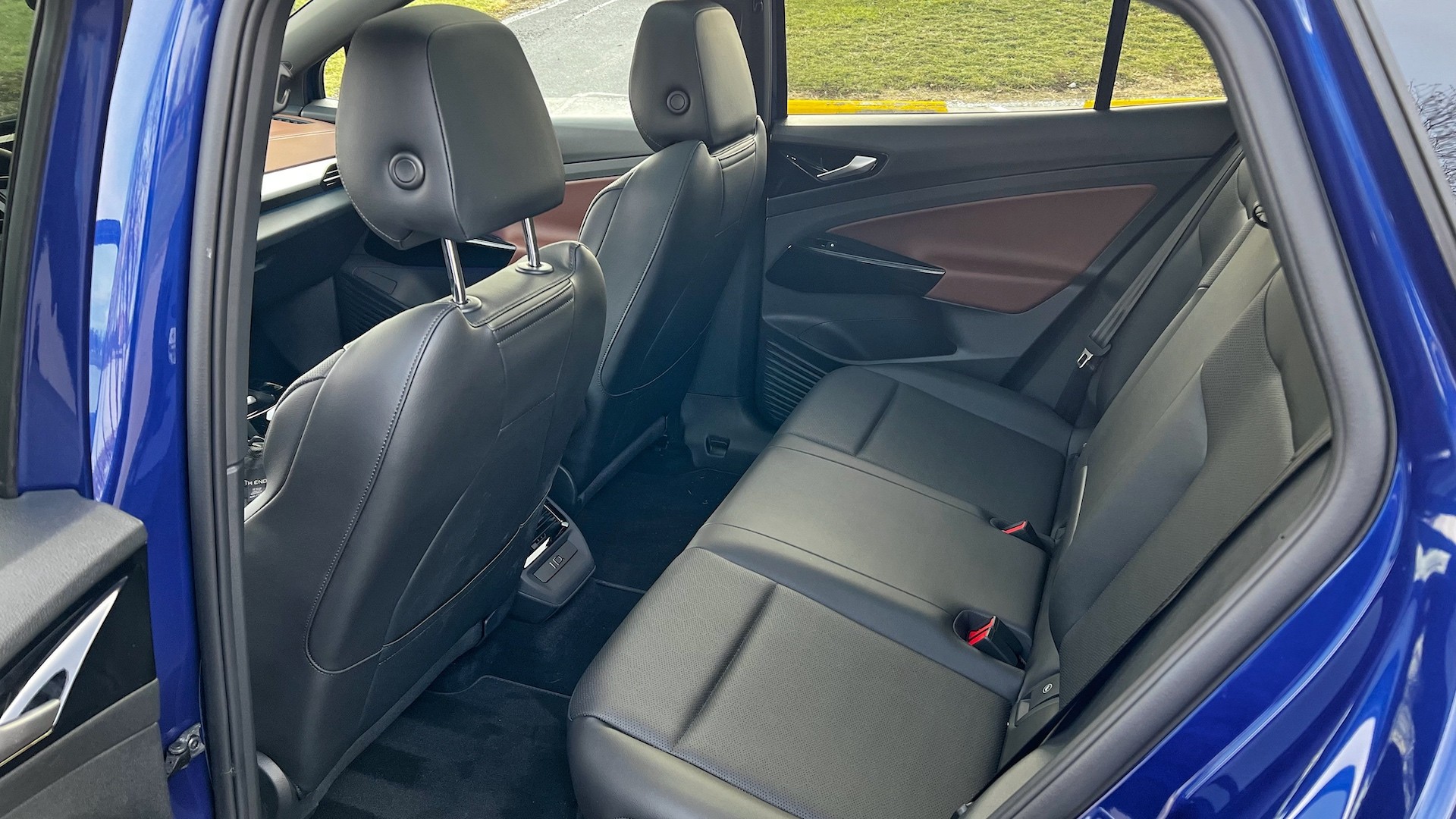
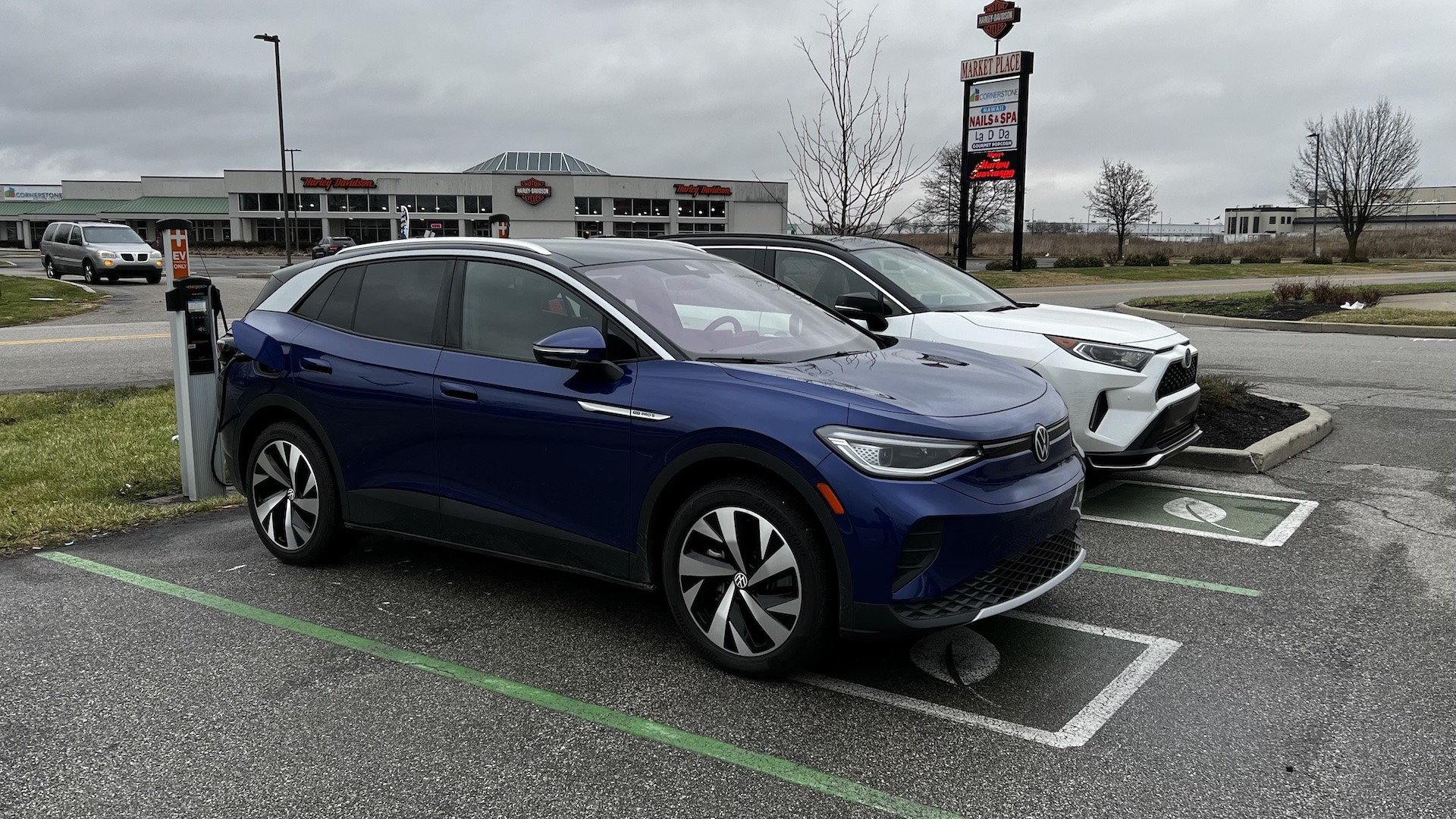
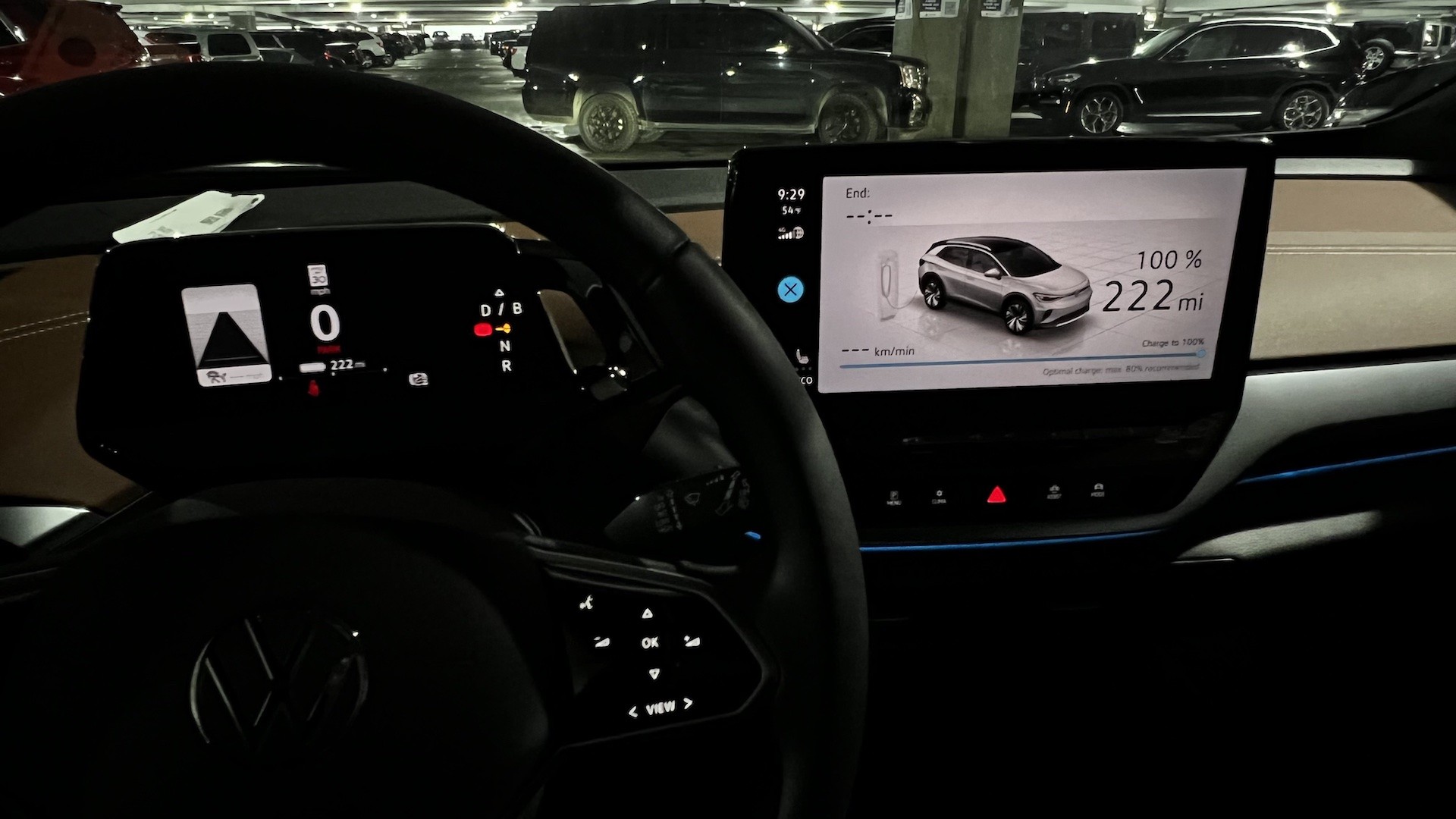
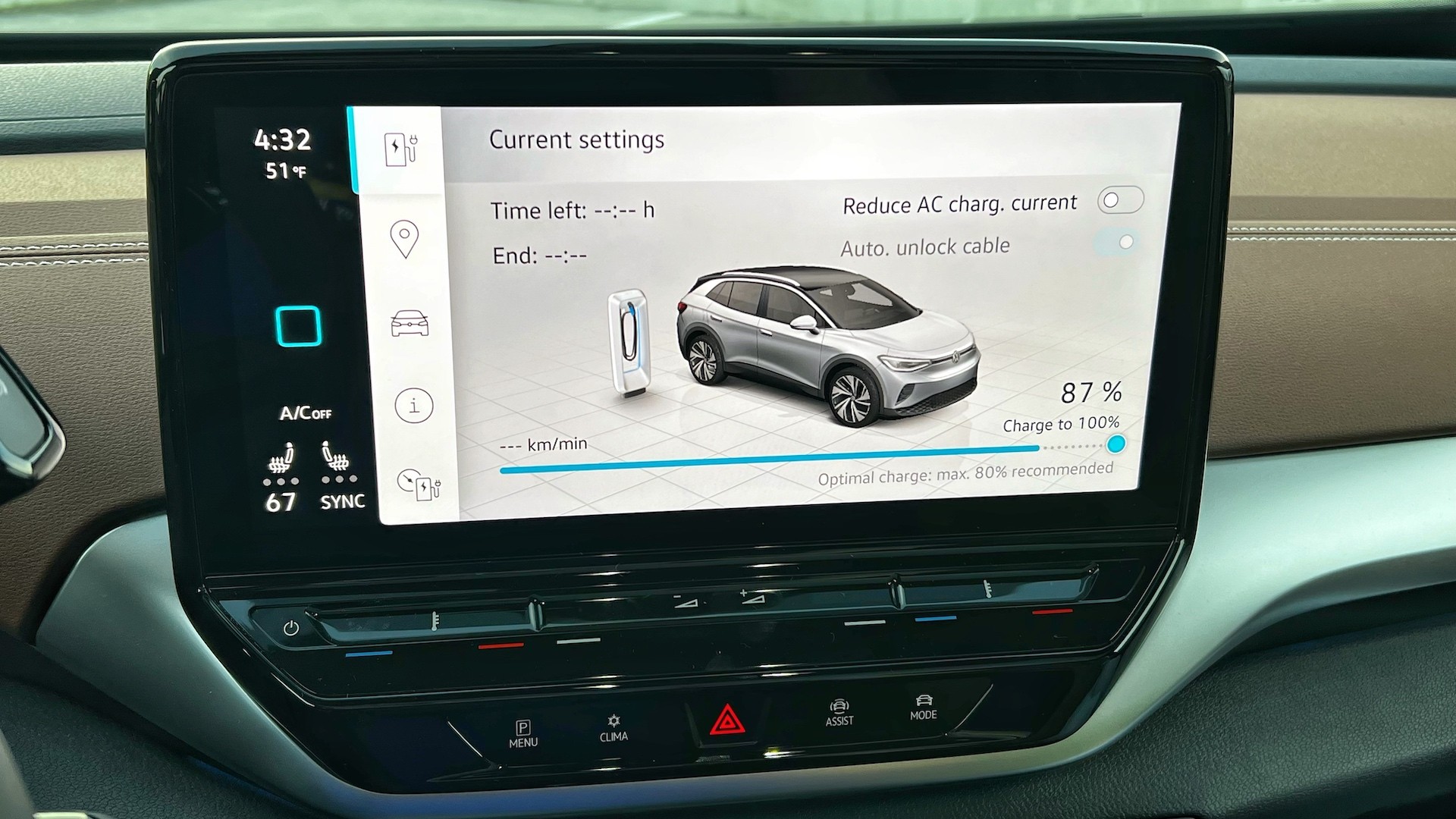
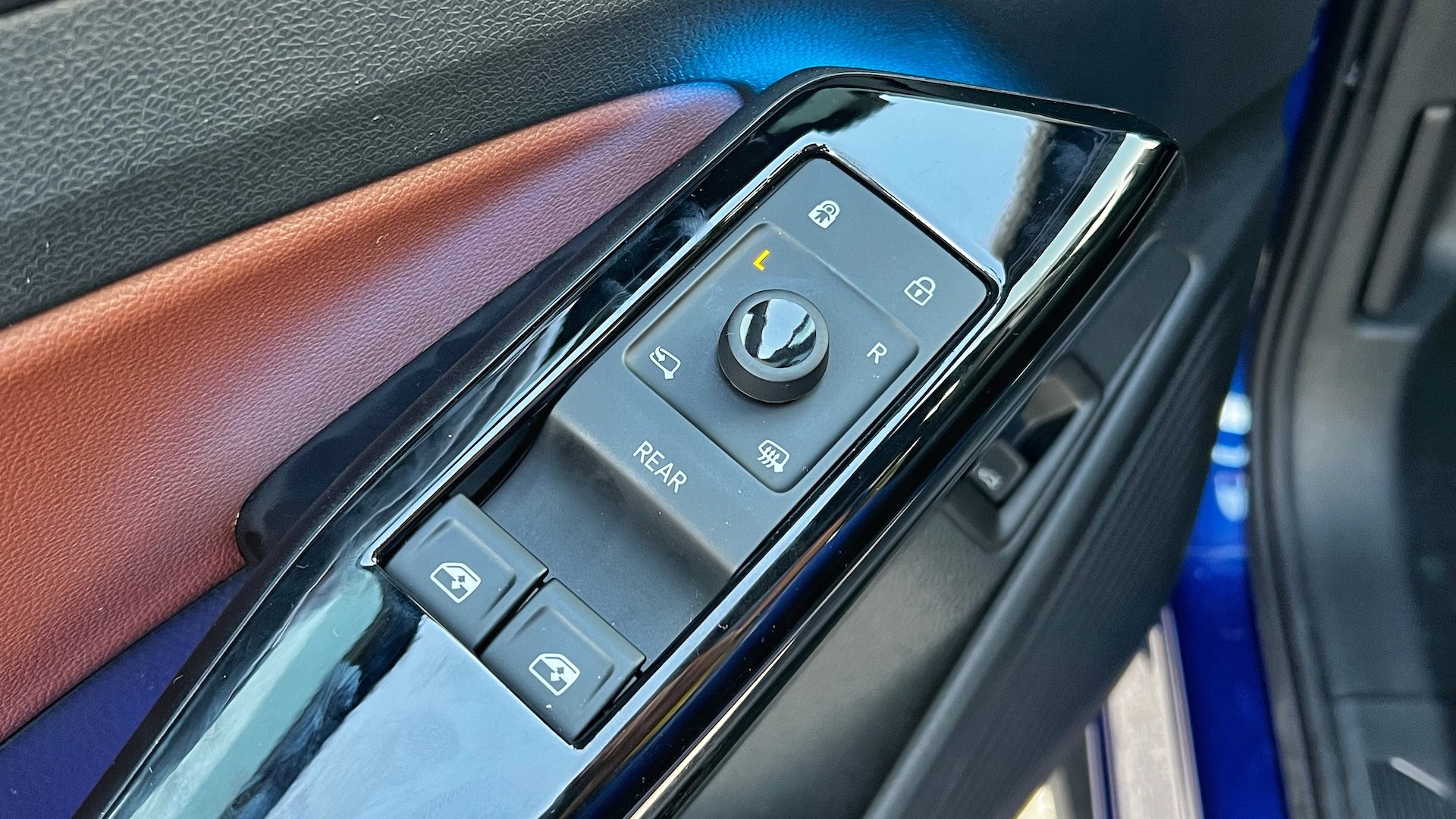
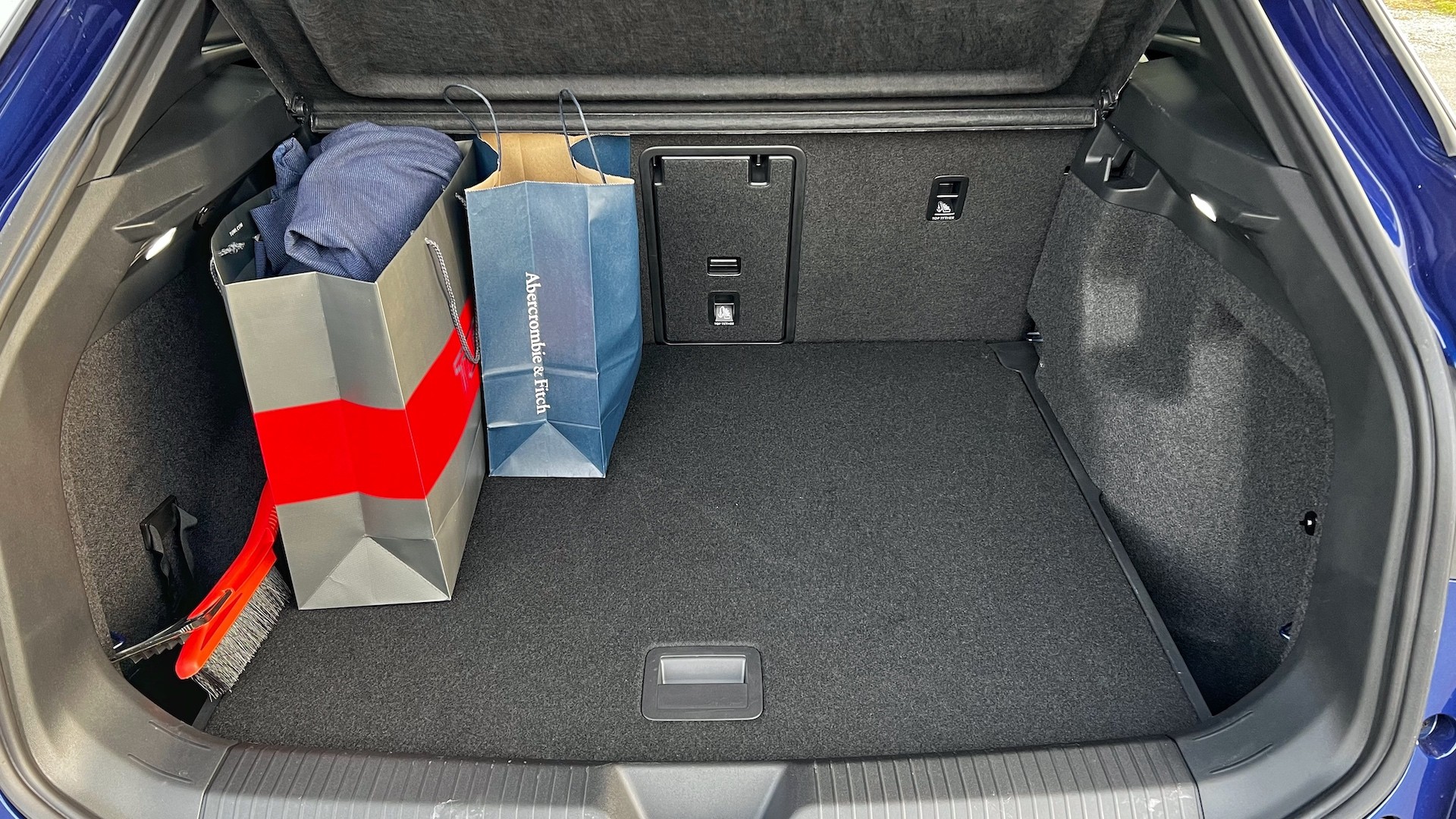
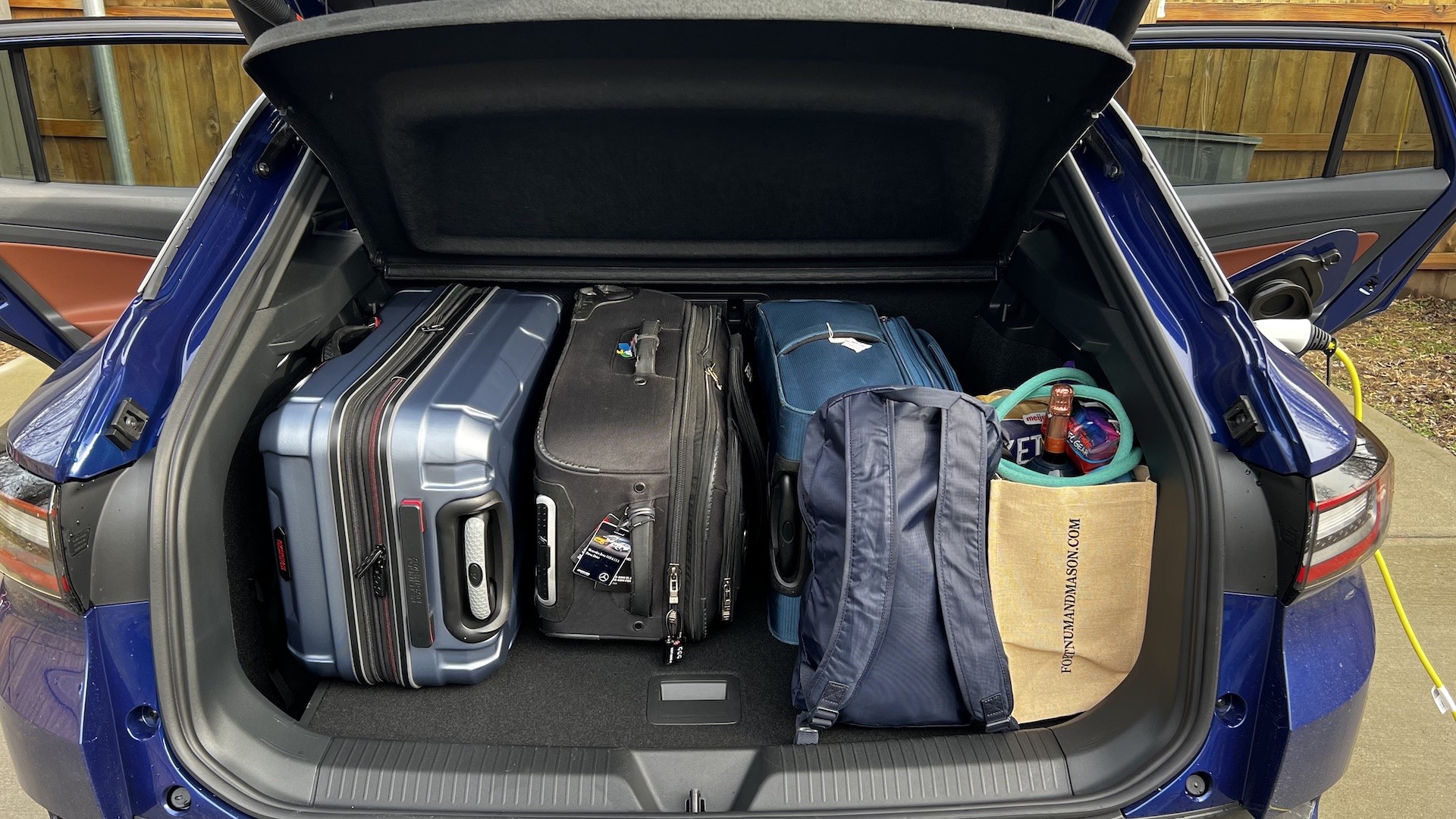
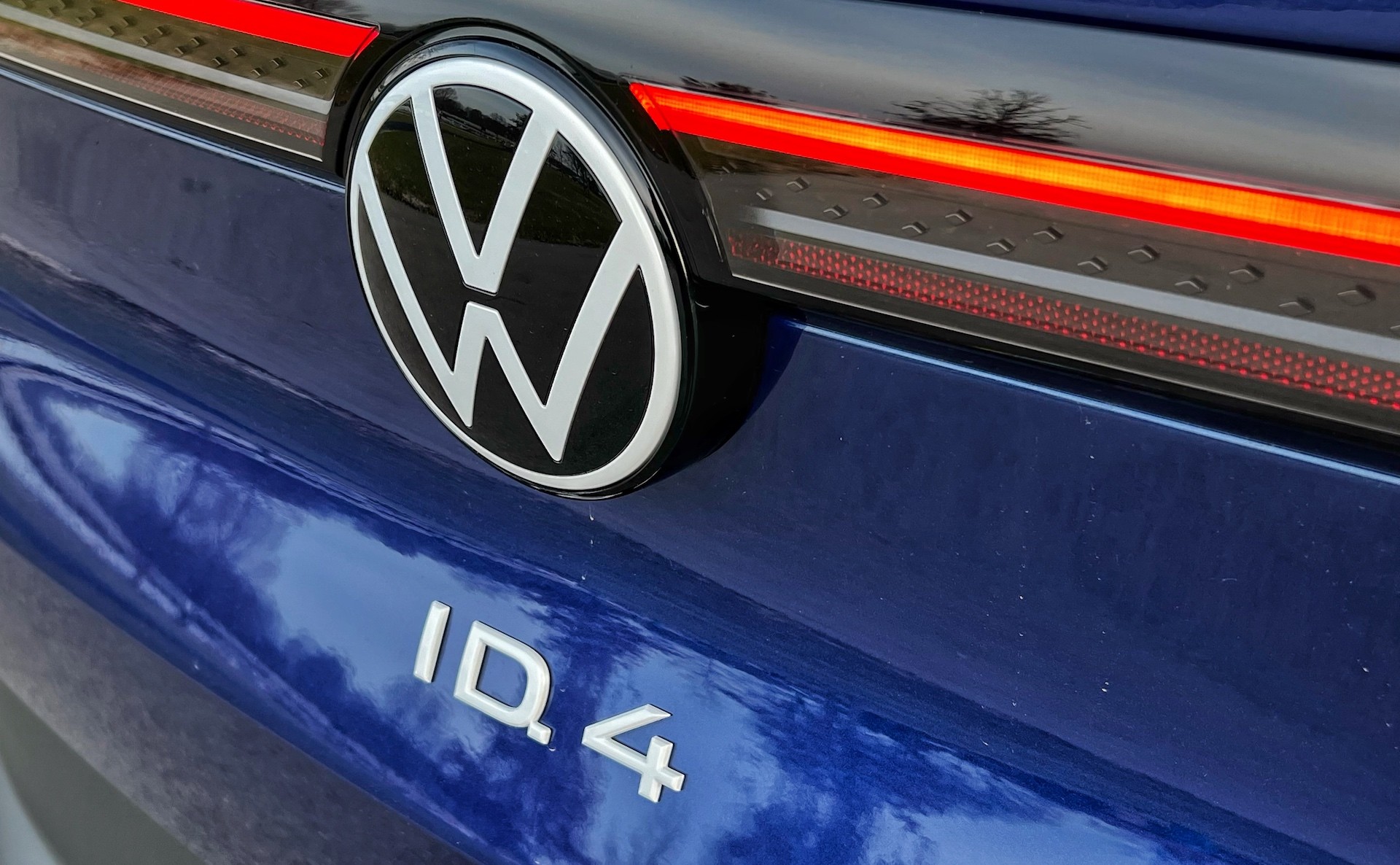
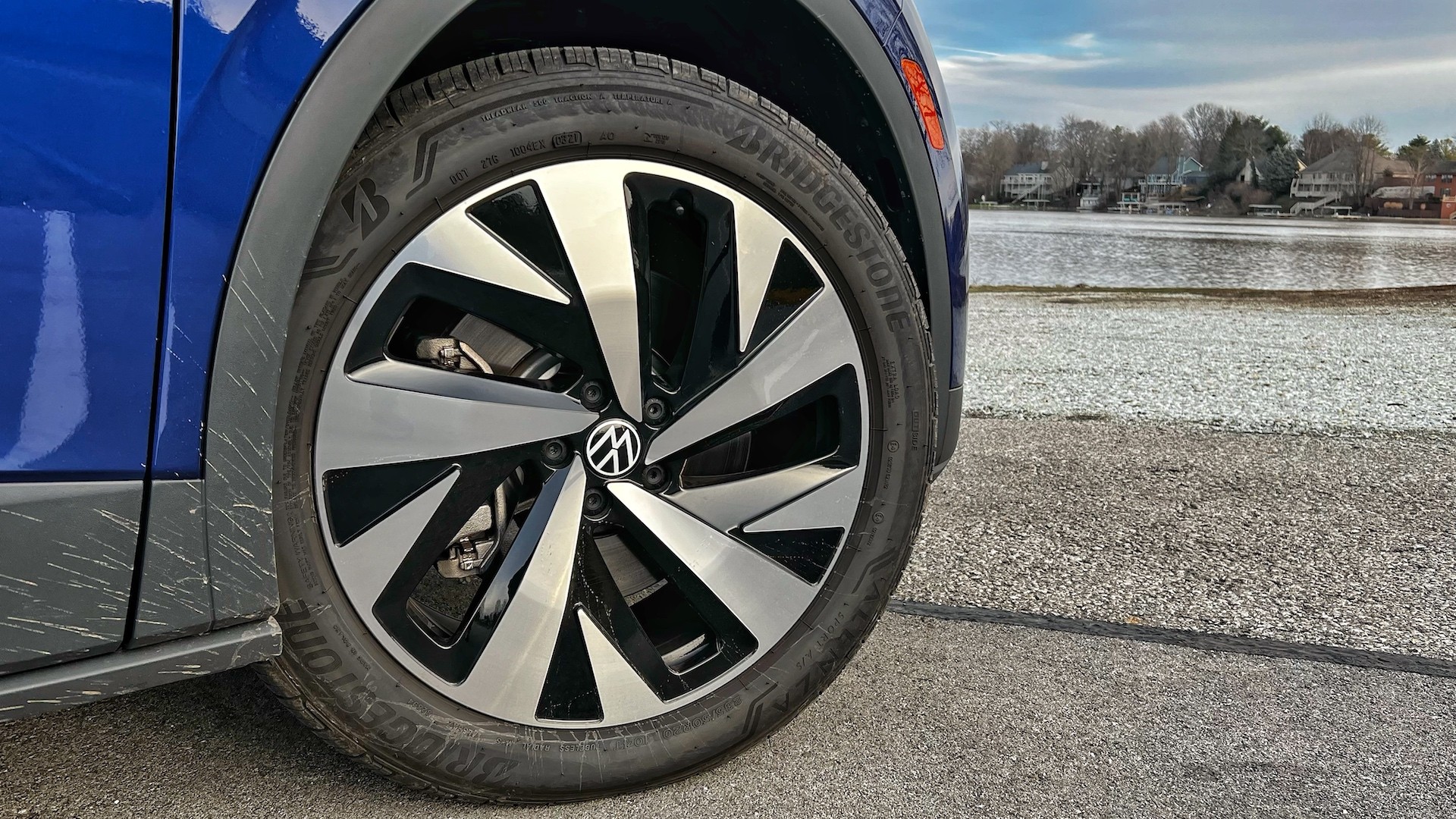
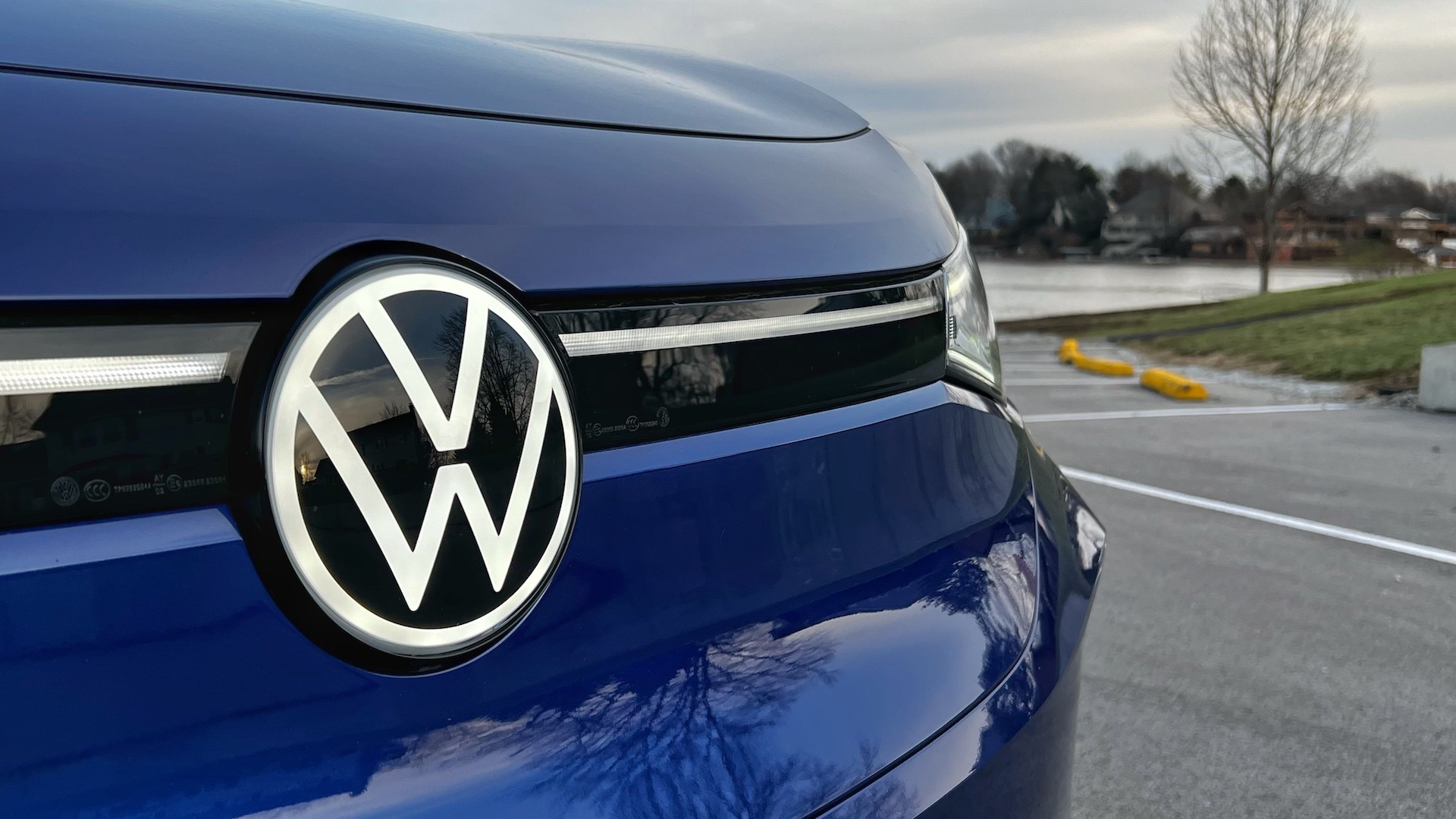
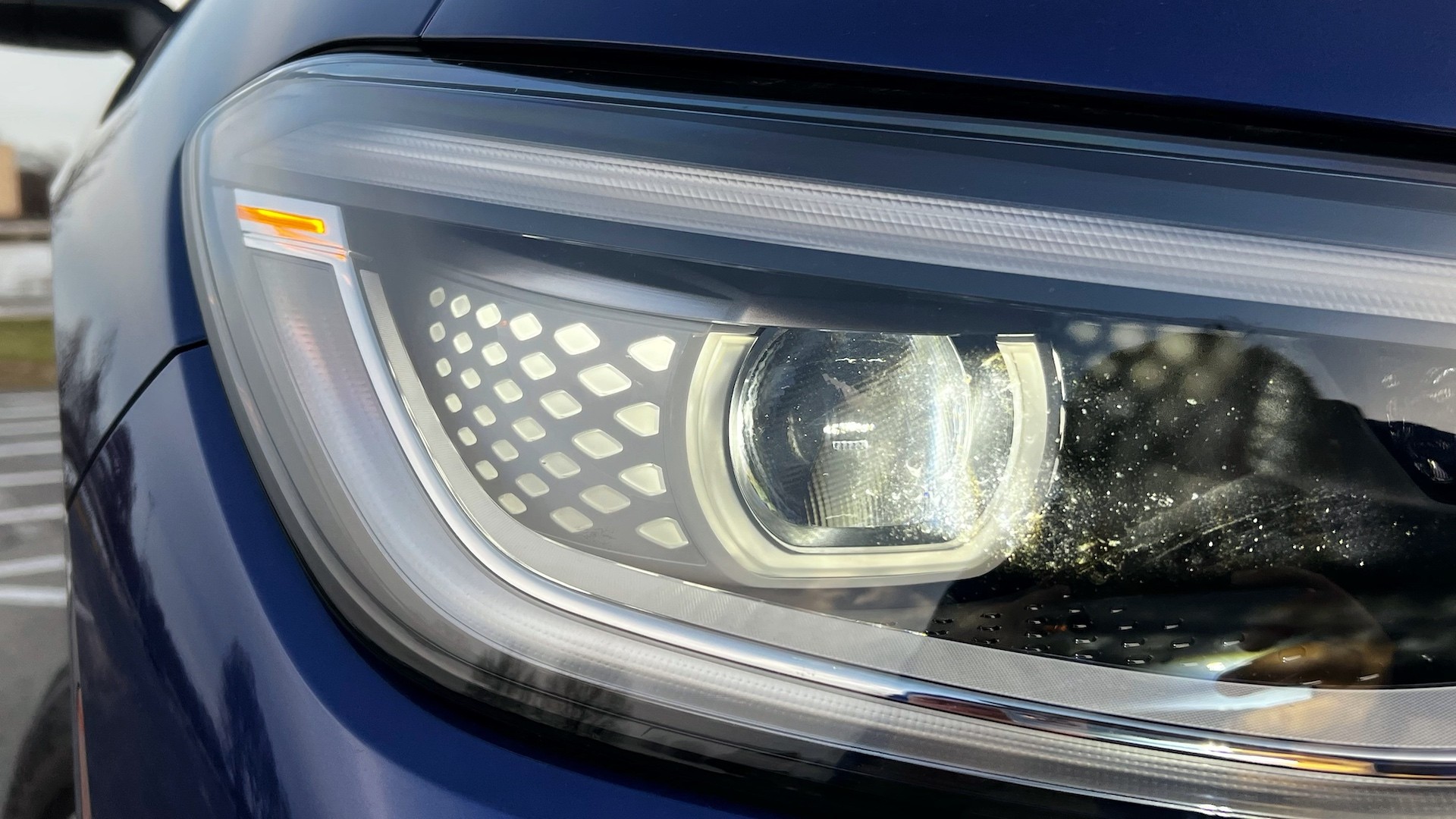
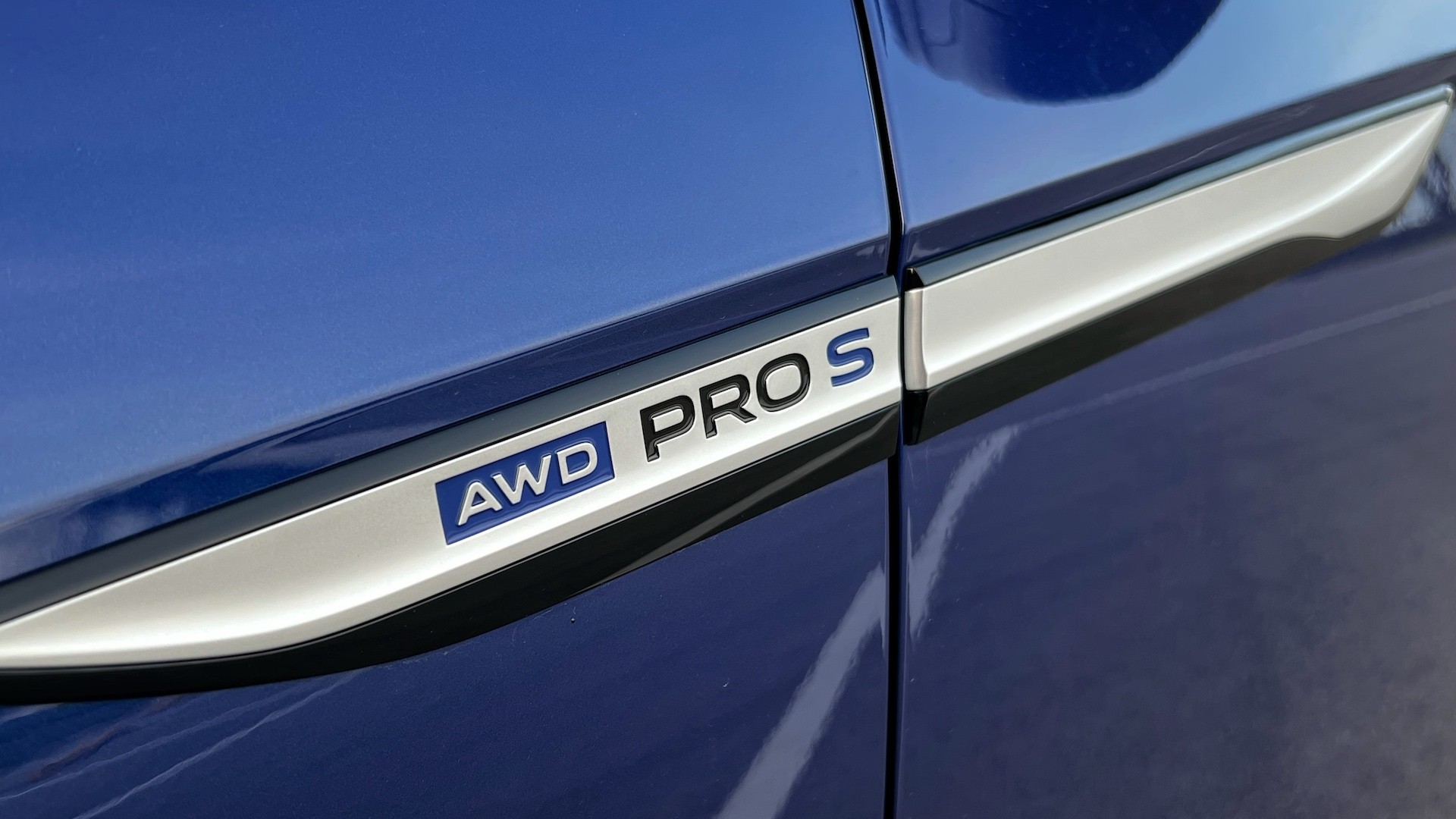
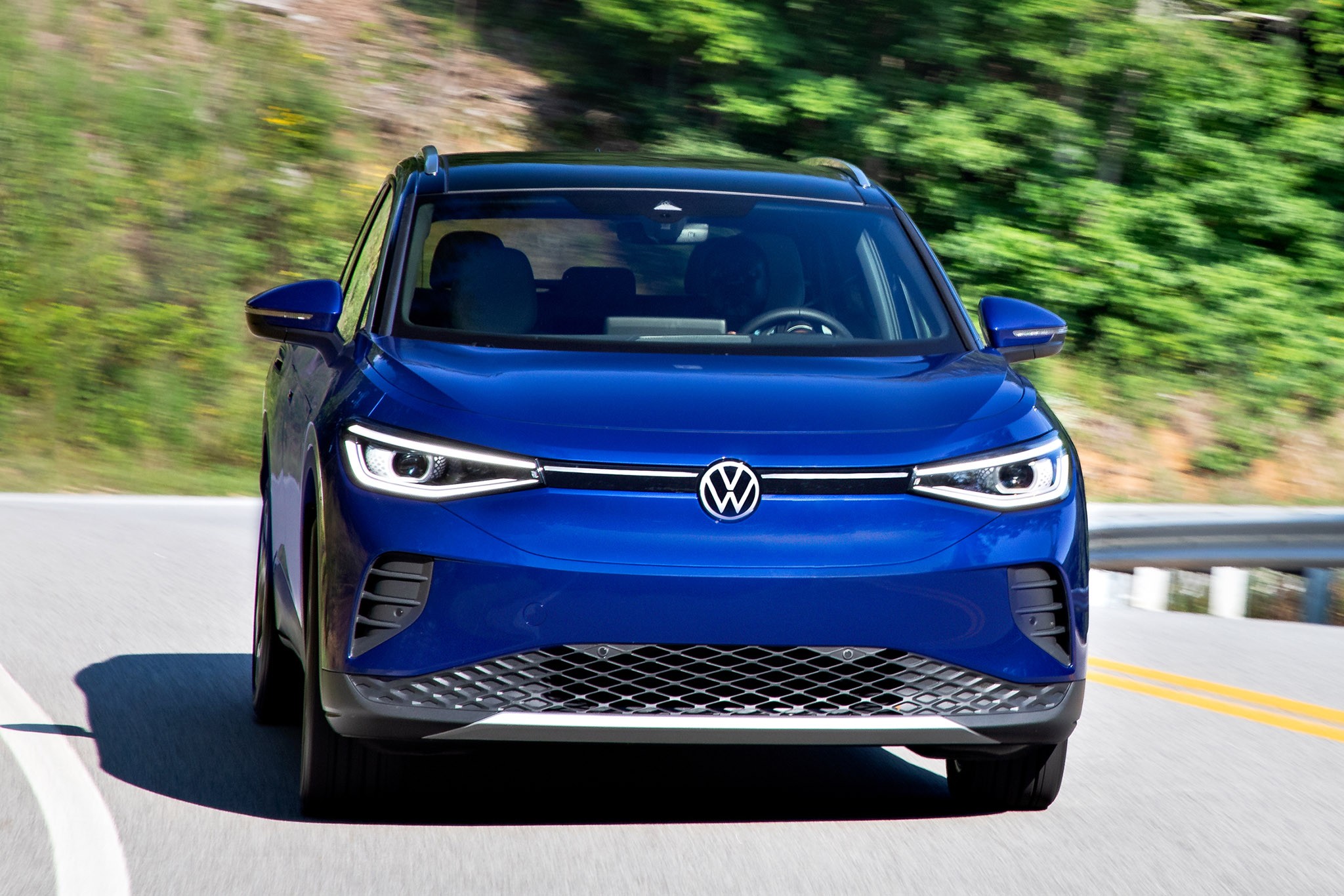
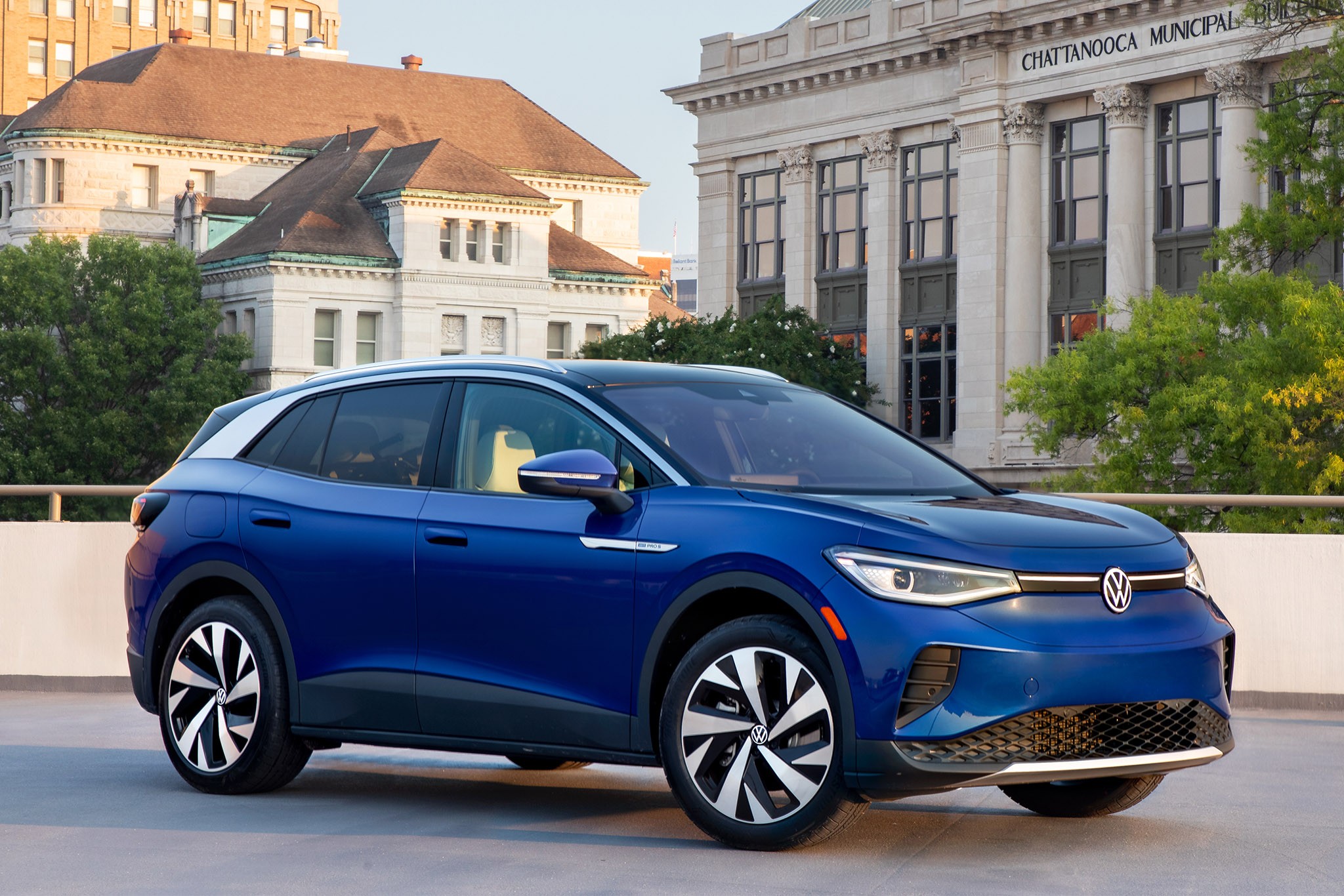
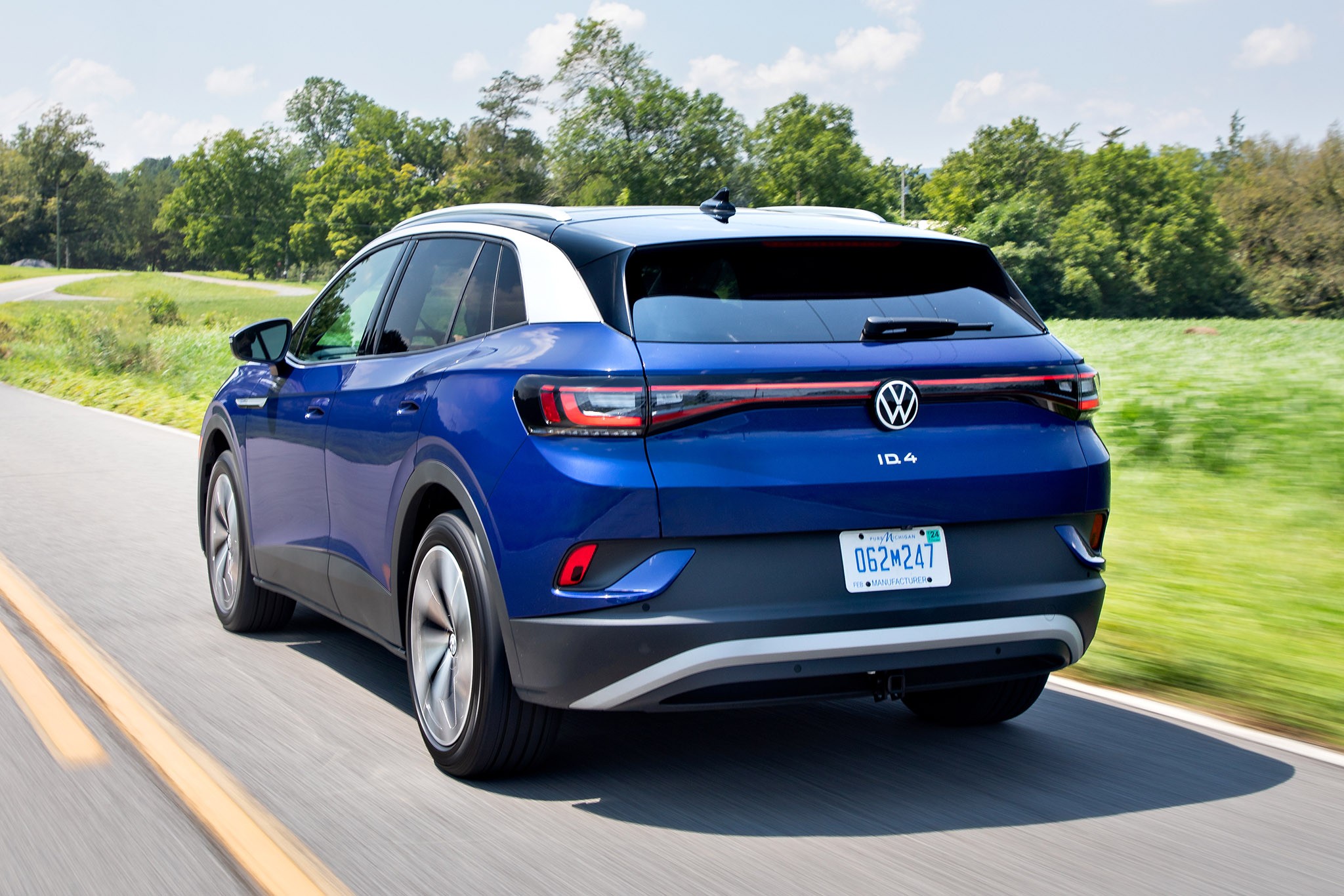
The Basics of the 2021 Volkswagen ID.4
The 2021 Volkswagen ID.4 marks the debut of the ID. family of electric vehicles in the U.S. market. Globally, Volkswagen offers other ID models like the ID.3, ID.5, and ID.6, spanning various sizes from hatchbacks to crossovers. In the American lineup, the 2021 Volkswagen ID.4 positions itself between the compact Taos and the slightly larger Tiguan in terms of dimensions. Specifically, the Taos measures 175 inches in length, the ID.4 at 180 inches, and the Tiguan at 186 inches.
Volkswagen imbued the 2021 Volkswagen ID.4 with an exterior design that reflects its electric nature. The vehicle boasts a smooth silhouette, uncluttered lines, and stylish 19-inch wheels, resulting in a contemporary crossover aesthetic. This modern look is achieved through design simplicity, avoiding excessive angles or futuristic lighting gimmicks. While subjective, the 2021 Volkswagen ID.4 presents a neat and streamlined appearance.
This minimalist approach extends to the interior of the 2021 Volkswagen ID.4, which is a welcome design choice. Staying true to Volkswagen’s design ethos, the cabin prioritizes user comfort and practicality. Notable interior features include a spacious storage area beneath the dashboard for bags, four cupholders in the front, and a conveniently angled wireless charging pad near the driver’s armrest. A fixed glass roof with a power-operated shade allows for light regulation. However, the absence of physical controls like a volume knob is a notable omission, which will be discussed further.
Both the 2021 Volkswagen ID.4 Pro and Pro S trims share the same all-wheel-drive electric powertrain. This consists of an 82-kWh lithium-ion battery powering two electric motors: an asynchronous motor at the front and a permanent magnet synchronous motor at the rear. The combined output is rated at 295 horsepower and 330 pound-feet of torque. The EPA-estimated driving range for the 2021 Volkswagen ID.4 is between 240 and 249 miles on a full charge, with the base trim achieving the higher figure due to its lighter weight.
It’s important to note that while this review focuses on the 2021 Volkswagen ID.4 model, the 2022 version introduces some significant updates. The powertrain remains available, but for the 2022 Volkswagen ID.4, buyers can choose between rear-wheel-drive (201 hp) and all-wheel-drive configurations. The DC fast-charging capability has been improved from 125 kW to 135 kW, reducing charging times. A brake-hold feature has also been added, enhancing the one-pedal driving experience. Volkswagen also promises an improved EPA-estimated range for the 2022 models compared to the 2021 Volkswagen ID.4.
Driving Dynamics of the VW ID.4
Starting the 2021 Volkswagen ID.4 is an exercise in simplicity. There’s no traditional ignition key to turn. Simply sitting in the driver’s seat activates the vehicle’s systems, including the screens, climate control, and audio. To engage drive, a unique rotary shifter, located behind the steering wheel to the right of the instrument cluster, is used. Twisting it away from you selects Drive, while twisting it towards you engages Reverse. Park is engaged by pressing a button on the side of the shifter. Exiting the vehicle automatically powers it down when the seat sensor detects the absence of the driver. While initially unconventional, this system is user-friendly. A conventional push-start button is also available as an override.
Once underway, the 2021 Volkswagen ID.4 delivers a smooth and effortless driving experience. Despite being a crossover, it offers brisk acceleration thanks to its near-300 horsepower output. The ID.4 accelerates quickly and silently from a standstill, often surprising onlookers with its unexpected agility. This responsiveness is also evident at highway speeds, where a touch of the accelerator provides ample power for passing maneuvers.
The steering feel in the 2021 Volkswagen ID.4 is commendable, aligning with positive experiences in other EVs like the Ford Mustang Mach-E and Polestar 2. It offers a direct and communicative feel during spirited driving on highways or winding roads, while remaining light and manageable in parking lots and urban environments. Maneuvering the ID.4 in tight spaces is easy, with responsive and harmonious accelerator, brake, and steering inputs across various speeds.
One-pedal driving is selectable via the shifter. However, in the 2021 Volkswagen ID.4 model tested, the one-pedal driving was less refined than in competitors like the Nissan Leaf or Mustang Mach-E. It required more frequent use of the brake pedal to achieve complete stops or to modulate speed effectively. The tested 2021 model also lacked a brake-hold feature, which is included in the 2022 Volkswagen ID.4, further impacting the one-pedal driving experience. Combined with the lack of physical buttons for essential controls, this contributed to a less enjoyable driving experience than anticipated.
The Highs and Lows of the 2021 Volkswagen ID.4
The 2021 Volkswagen ID.4 excels in its core mission of electrifying the everyday crossover. Its primary strength lies in its practicality and comfort. The cabin is genuinely spacious, offering comfortable seating for both front and rear passengers. The trunk provides ample cargo space for luggage, and the rear seats comfortably accommodate adults, not just children. Rear passengers benefit from dedicated climate vents and USB-C charging ports. Wide-opening doors, a low floor, and a relatively high roofline facilitate easy entry and exit. Another positive aspect is the seating position, which, unlike some EVs, provides a sense of sitting in rather than on the vehicle, contributing to a more natural driving feel.
However, these positive attributes are significantly overshadowed by the frustrating infotainment system in the 2021 Volkswagen ID.4. It is arguably the vehicle’s weakest point. Simple tasks like finding a channel list for SiriusXM satellite radio proved to be inexplicably difficult. Operating the climate control requires an extra and illogical step of pressing an on-screen power button before adjusting fan speed or temperature. Furthermore, the system was frequently unresponsive, failing to activate the heater or displaying error messages for basic functions.
Adding to the user interface woes, the touch-sensitive controls for volume and other essential functions are cumbersome and imprecise. The overall user interface is plagued by glitches, sluggishness, and illogical organization. A particularly frustrating incident involved the heated steering wheel becoming stuck on its highest setting and being impossible to turn off through the system, requiring the driver to resort to holding the wheel with fingertips to avoid discomfort. Even power-cycling the car failed to resolve the issue initially, and it eventually turned off inexplicably.
Other technological glitches included headlights remaining on after the vehicle was turned off, despite being in auto mode, and a perplexing window control setup where only two switches are provided for all four windows, requiring a “Rear” selection to operate the rear windows. After an extended period of use, the system remained unpredictable and unreliable, undermining driver confidence and control.
2021 VW ID.4 Features, Options, and Competition
For the 2022 model year, the Volkswagen ID.4 lineup expands to include Pro, Pro S, and Pro S with Gradient trims. The base Pro rear-wheel-drive model offers a competitive starting price of $41,995 (including destination) and comes well-equipped with features like heated steering wheel and seats, LED lighting, 19-inch wheels, and driver-assistance technologies including lane centering, forward collision warning, and blind-spot monitoring. Higher trims offer optional upgrades such as a larger infotainment touchscreen, enhanced lighting, leatherette upholstery, a power liftgate, 20-inch wheels, and a black roof.
The 2021 Volkswagen ID.4 enters a competitive segment, facing rivals like the Hyundai Ioniq 5 and the Ford Mustang Mach-E. These three electric crossovers share similar starting prices in the low $40,000 range and offer both rear-wheel and all-wheel-drive configurations. They are designed as sporty, low-riding crossovers with spacious and cleverly designed interiors for five passengers. The Tesla Model Y, while starting at a higher price point near $60,000, offers standard all-wheel drive, a longer 318-mile range, and access to Tesla’s extensive Supercharger network.
Sustainability and the 2021 Volkswagen ID.4
Volkswagen has made a significant commitment to electric vehicle development and sustainability. The company has publicly stated its intention to phase out internal combustion engine development by 2026. In line with this, Volkswagen announced ambitious plans to launch 70 new EVs across its brands and aims to sell 22 million EVs by 2028. This commitment extends to motorsport, with Volkswagen ending all non-electric racing programs.
The 2021 Volkswagen ID.4 is a crucial component of Volkswagen’s broader EV strategy. Built on the dedicated MEB electric platform, it represents Volkswagen’s serious entry into the EV market, particularly in the important U.S. market. Offering zero emissions and a practical 240-mile range, the 2021 Volkswagen ID.4 positions itself as a more sustainable family transportation option.
Value and Verdict on the 2021 Volkswagen ID.4
The 2021 Volkswagen ID.4 presents a compelling value proposition, particularly with the 2022 models and the introduction of a more affordable rear-wheel-drive variant. It offers comparable features and capabilities to its competitors at a slightly lower price point.
However, the frustrating user experience and glitch-prone technology significantly detract from the otherwise comfortable and capable driving experience of the 2021 Volkswagen ID.4. While users may adapt to some of these shortcomings over time, the fundamental question remains: why should drivers have to adapt to inherently flawed systems in a new vehicle? A well-designed user interface should be intuitive and seamless from the outset. While software updates can address some of the OS issues, the lack of physical buttons and knobs is a hardware limitation requiring a more substantial redesign.
Using smartphone integration systems like Apple CarPlay or Android Auto only partially alleviates these issues, as core EV functions like climate control and charging management remain within Volkswagen’s native system. In a traditional gasoline car, these tech issues might be less critical, but in an EV, where technology is central to maximizing efficiency and usability, the 2021 Volkswagen ID.4 falls short.
For drivers in mild climates who rarely adjust climate controls or those with minimal infotainment needs, the 2021 Volkswagen ID.4 could still be a viable option. Focusing on its driving dynamics and overlooking the tech flaws, the ID.4 is a solid daily driver and a compelling option for transitioning from internal combustion engine vehicles to EVs.
